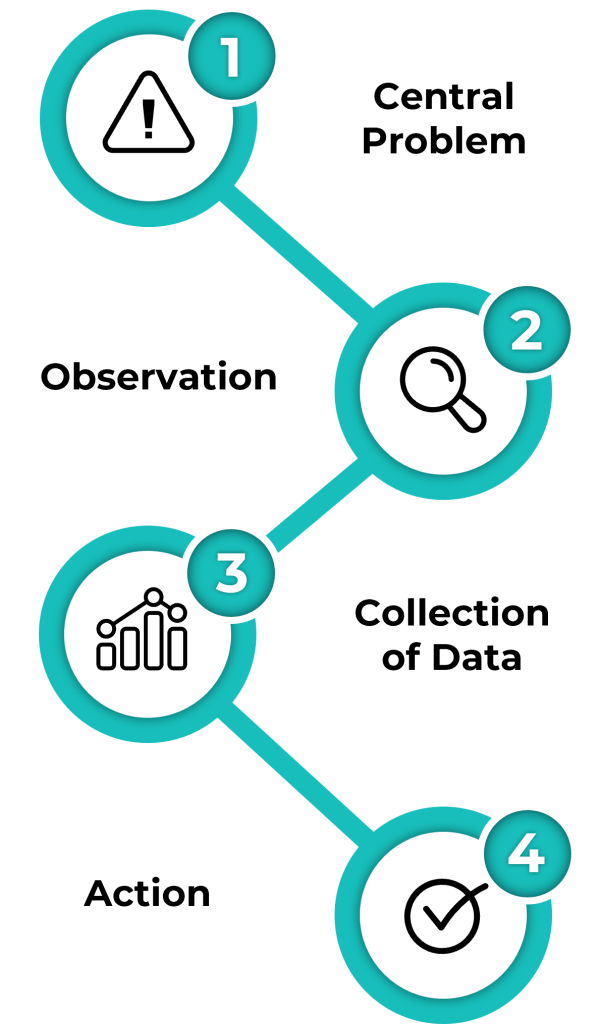There are various models of the action research process. Some models are simple in their design while others appear relatively complex. Essentially, most of the models share similar elements with small variations.

Action research models begin with the central problem or topic. They involve some observation or monitoring of current practice, followed by the collection and synthesis of information and data. Finally, some sort of action is taken, which then serves as a basis for the next stage of action research (Mills 2011).
- Central Problem / Topic
- Observation / Monitoring
- Collection of Data
- Action Taken
In this course, we will define the action research process as composed of four stages and nine steps:
Image Hotspots
Action Research Process
Click each + icon to expand the steps of the stage:
It is important to note that action research is a flexible, iterative process of continuous improvement, emphasizing adaptability and responsiveness to findings at each cycle.
Kurt Lewin’s approach to action research involves a cyclical, spiral process consisting of several stages, each comprising planning, action, and reviewing the results of the action. This method is aligned with Dewey’s concept of experiential learning and is particularly suited to solving problems in social and organizational contexts.

